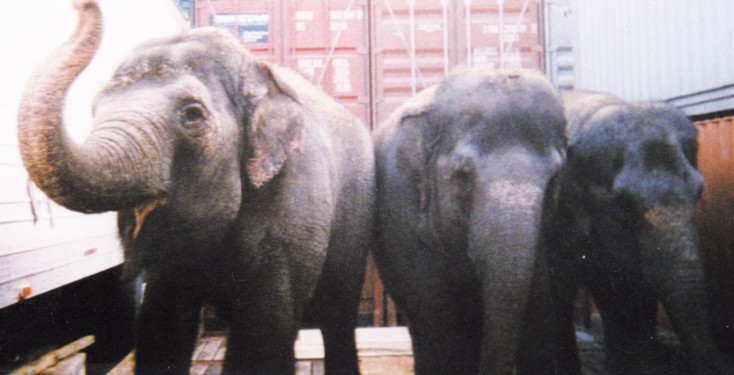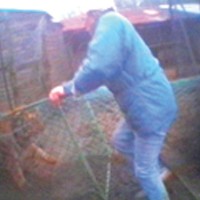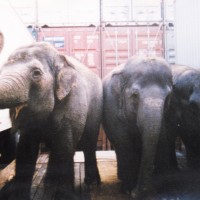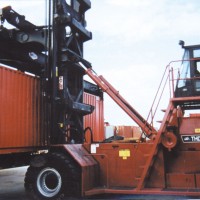Stop Circus Suffering USA: 6 Recommendations for Action
Part 6 of ADI’s “Stop Circus Suffering USA” report – Recommendations for Action

Observational and scientific evidence makes it clear that the traveling circus is no place for animals and that these archaic shows should be prohibited. Legislation prohibiting the use of wild animals from traveling circuses has already been passed in several countries and at least two countries are currently considering full bans, on both wild and domestic animals such as horses and ponies.
Significantly, this is an industry that can survive without animals, with human-only circuses proving increasingly popular with the public around the world.
It is vital that legislators address this issue decisively and avoid the wasted expense of developing regulations and guidelines that are not enforceable. Revised and more comprehensive guidelines on animals in circuses should involve independent animal welfare experts from nongovernmental organizations. This review should give urgent consideration to a ban on the use of animals in traveling circuses and a ban on the use of force during training, for reasons of animal welfare.
There is significant scope to improve the impact of the Animal Wefare Act for many animals.
The Animal Welfare Act should be updated to incorporate basic principles of animal welfare. It should apply to all animals in captivity. A comprehensive mechanism needs to be introduced for administration of regulations, inspections, and enforcement. This should include the confiscation of animals who are identified as being at risk of suffering due to poor welfare provision.
The Act should incorporate a core statement of the principles of animal welfare to be upheld, and the needs of animal should be clearly defined as the need for:
- A suitable environment
- A suitable diet
- The ability to exhibit normal behavior patterns
- Appropriate housing with or apart from other animals
- Protection from pain, suffering, injury and disease
These provisions for protection of the welfare of animals should apply to:
- Any lawful purpose for which the animal is kept
- Any lawful activity undertaken in relation to the animal
Regulations and standards of animal welfare should be developed for animals in commerce and industry. Standards of humane treatment and guidelines on the duty of care should be developed, for those responsible for captive or domestic animals living in human society.
Globally the actions of municipalities, and even individual landowners, have had a profound impact in moving the circus industry away from the use of animals to human-only circuses. There are already such prohibitions in place in the U.S., and although this is currently significantly less than Europe or South America, it demonstrates the public support for such a change.
Imported actsU.S. circuses regularly use animals and trainers from abroad. This entails very long journeys to reach the U.S., and even less control over training methods. Here we track an animal act supplied by trainer Dicky Chipperfield, returning to Europe after appearing with Ringling Brothers and Barnum & Bailey Circus. Graham Thomas Chipperfield presented ten lions and three elephants (Letchmai, Mina and Camilla) for several years for Ringling Brothers. Graham’s brother, Richard Chipperfield Jr., joined him with 12 tigers, but after less than a year, was seriously mauled by one of them. Graham forced the tiger into a cage and shot him to death. The brothers stopped performing and so most of the animals had to return to Europe. Ringling Brothers employee Tom Rider accompanied them. On November 18, 1999, the elephants made a 350-mile journey from Tampa, Florida to Charleston, South Carolina, in a metal container on a truck. They were shut in for two days and given water only once. At Charleston they were loaded onto a cargo ship and allowed out into a very small space between the other containers. As the boat moved they became restless and so were returned to their container. Whether it was the noise, motion, environment or a combination of factors, the elephants refused to go out again during the voyage. Also on board were 16 large cats, including three cubs, in a 53-foot-long trailer. One cub died during the journey. Ater ten days at sea, they arrived in Algeciras, Spain. Rider said, “The elephants were in the worst state I had seen them, kicking and shoving the doors to get out. We set them loose in the container yard for 20 minutes, but put them back as they tried to break through the fence. The undersides of their bellies were shaking, twitching with stress.” During four days in Algeciras, the elephants came out twice and, with supplies limited, they were living off hay. Between December 2 and 5, the elephants were transported by road to Amsterdam, Holland, receiving water twice. They remained in Amsterdam until the 12, but because of rain did not leave their container, except for one 25-minute break. On December 12 they moved to France, arriving on the 14. An elephant hook and electric shocks were used in rehearsals. Rider: “Dicky told Martin [Lacey junior] to give them a command. If they didn’t respond, to give it to them a little heavier in a deeper voice. If they didn’t respond, he would let them have it with the hook. “Get into ‘em” he’d say.” It snowed in France, so the elephants remained in the truck. Leaving France, they drove 24 hours and arrived at Circus Barelli in Dresden, Germany the following night. The elephants came out of their transporter and were chained by the legs in an unheated tent. Tom Rider: “In rehearsals, Dicky would use both hands, yanking at them with the elephant hook. Letchmai was used, even though she was diagnosed with arthritis the previous year…. In the ring, Dicky was using a handheld stun gun on the elephants. Dicky used the hook behind the ear, legs, trunk and chin. They were left with blood dripping. They would use the ‘zapper’ electric shock as well…. if the elephants were not moving. When Mina did not move fast, Martin would hit her with the hook around the head. After the show he started beating Camilla because the act had not gone right.” From Dresden the animals went to Massey near Paris followed by a two-day journey with one water break to Gottingen, Germany. Here the elephants were kept chained in the dark before moving to Frankfurt. Rider left the circus on March 12. Before doing so, he “counted the marks on the elephants’ legs from the hook. There were 72 on Mina’s front right leg, 36 on the back, 27 on Camilla’s front leg, 9 on the back right leg and marks behind the ear.” |
Read the Executive Summary of the Report.
1 Introduction
2 The Traveling Environment
3 Pilot Study: Animals in Traveling Circuses in the U.S.
4 The Scientific Evidence
5 The Animal Welfare Act
6 Recommendations for Action
7 Appendix: Public Opinion
8 References




Pingback: Stop Circus Suffering USA: 1 Introduction | Stop Circus Suffering
Arrêtons de faire souffrir ces animaux dont l’exploitation et la captivité sont indignes.